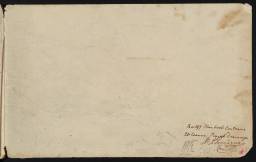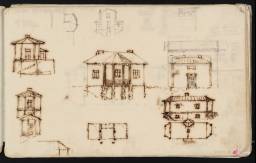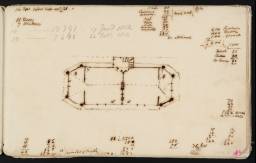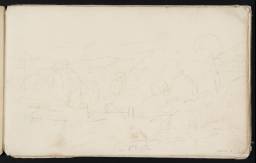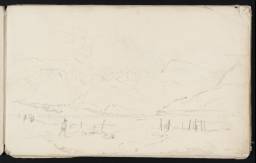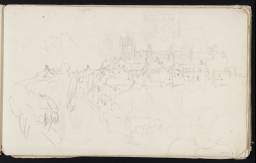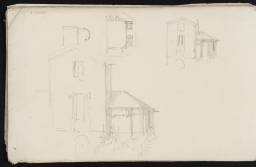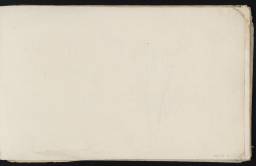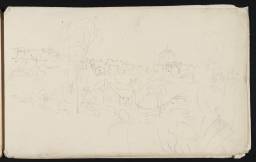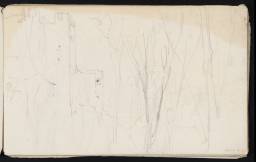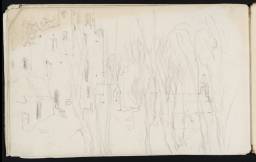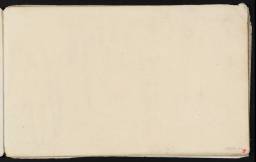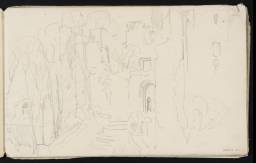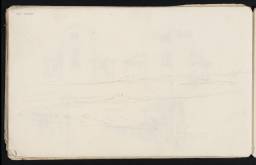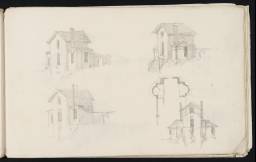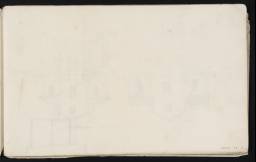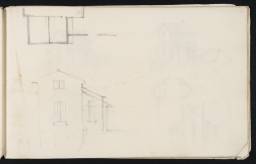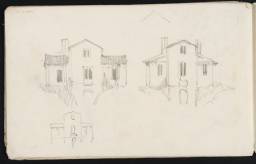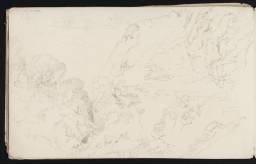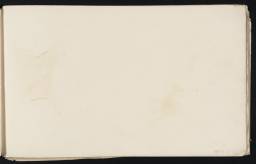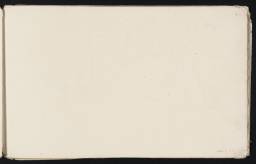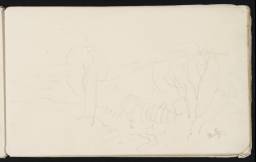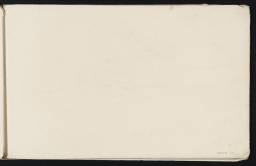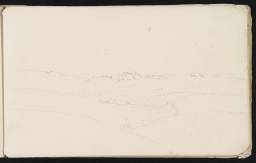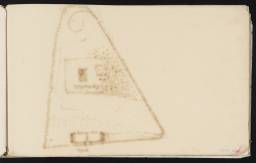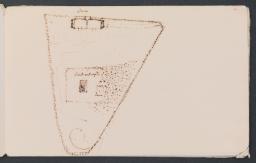Turner Bequest CXXVII 1–37
‘Sketchbook’ comprising a gathering of loose bifolio sheets, with associated loose single leaves
23 sheets of white wove paper, of which 14 are folded in half to form two leaves, and 9 are single leaves of corresponding dimensions; page size approximately 126 x 202 mm
Made by Henry Salmon, Langcliffe Mill, Yorkshire; various sheets watermarked ‘H Salmon | 1805’
Numbered 197 (D08965; CXXVII 1) and 148 (D09009; CXXVII 31) as part of the Turner Schedule in 1854 and endorsed by the Executors of the Turner Bequest
23 sheets of white wove paper, of which 14 are folded in half to form two leaves, and 9 are single leaves of corresponding dimensions; page size approximately 126 x 202 mm
Made by Henry Salmon, Langcliffe Mill, Yorkshire; various sheets watermarked ‘H Salmon | 1805’
Numbered 197 (D08965; CXXVII 1) and 148 (D09009; CXXVII 31) as part of the Turner Schedule in 1854 and endorsed by the Executors of the Turner Bequest
Accepted by the nation as part of the Turner Bequest 1856
Exhibition history
References
Finberg notes of this so-called Sandycombe and Yorkshire ‘sketchbook’: ‘Loose leaves of two sketch books which cannot now be separated, as they are similar in size and quality of paper. The covers are not to be found, and the present sequence of pages is fortuitous.’1 There are indeed speculative plans, elevations and views working towards the design of Turner’s Twickenham house Sandycombe Lodge, and the book has been assigned to the Sandycombe section of the present catalogue, along with the Windmill and Lock sketchbook (Tate; Turner Bequest CXIV) and two separate working sheets (see the overall Introduction to the section).
There are also various sketches of coasts, mountains, hills, towns and castles, many of which are identifiable, although none may in fact show Yorkshire sites. There are instead views of Millom Castle, in the south-west corner of Cumbria (D08975, D08976, D08978, D08998, D09001; CXXVII 9, 9a, 11, 23a, 25a), presumably made on the same tour in 1809 as others of the site in the Petworth sketchbook (Tate; Turner Bequest CIX), as discussed under D08975. Other possible views of Cumbria in the present sketchbook have been assigned to the same date.
Views around Eridge Castle in Sussex (D08989, D08991, D08996; CXXVII 18a, 19a, 22a), are similar to those in the Vale of Heathfield sketchbook (Tate; Turner Bequest CXXXVII), datable to 1810 or later, as discussed under D08996. (Vale of Heathfield had also apparently been used in Cumbria in 1809, as discussed by David Blayney Brown in its Introduction elsewhere in the present catalogue.) Other identified and possible Sussex views in the present book are thus assigned to about 1810, although they may all be a year or two later according to sources on the construction of East Grinstead’s church tower, apparently observed by Turner (see under D08970; CXXVII 6).
Three views are here tentatively identified as of the beach at Hastings, Sussex (D09010, D09011, D09013; CXXVII 32, 33, 34). Finberg’s suggestion that these show Scarborough, on the basis of a slight compositional similarity to various Turner watercolours of that Yorkshire subject, apparently led him to designate the book Sandycombe and Yorkshire, and even less convincingly to suggest Richmond, Yorkshire, as the subject of two pencil sketches which in fact show East Grinstead (D08970), and perhaps Rye in the same county (D08974; CXXVII 8a).
Eric Shanes has suggested the main Sandycombe design campaigns as between ‘the summer of 1809 and the early autumn of 1811’,2 with the sketches in the present book possibly ‘from the latter half of 1811’;3 in the absence of firm evidence, a date of about 1809–11 has been adopted here for the relevant pages. One (D08967; CXXVII 3) includes inscriptions referring to 1812, so the overall range of the sketchbook has been extended correspondingly.
Technical notes
How to cite
Matthew Imms, ‘Sandycombe and Yorkshire sketchbook c.1809–12’, sketchbook, January 2012, in David Blayney Brown (ed.), J.M.W. Turner: Sketchbooks, Drawings and Watercolours, Tate Research Publication, December 2012, https://www

